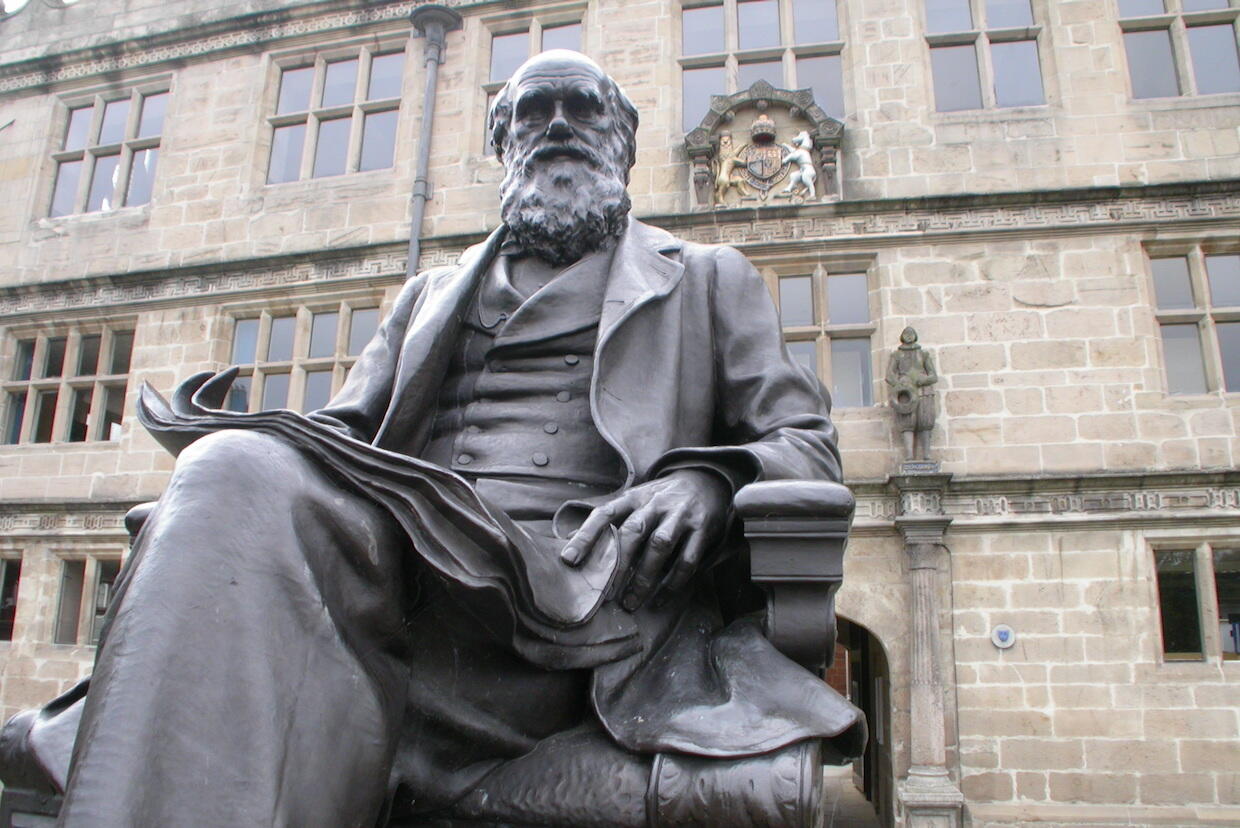
Sept. 15, 2020
‘Survival of the fit’: A VCU professor’s new book calls for a shift in how we think about evolution
“The Major Metaphors of Evolution: Darwinism Then and Now,” aims to address some of mankind’s most urgent problems by bringing back some of the complexity in Charles Darwin’s original arguments.
Share this story
A new book co-authored by Virginia Commonwealth University professor Salvatore J. Agosta, Ph.D., calls for a paradigm shift in the mainstream theory of evolution as humanity faces crises such as climate change. And it suggests that answers can be found in Charles Darwin’s original arguments.
Agosta, an associate professor in the Center for Environmental Studies, co-wrote “The Major Metaphors of Evolution: Darwinism Then and Now,” with Daniel R. Brooks, a professor emeritus at the University of Toronto. Agosta recently explained why the book, which intertwines biology, philosophy and history, aims to help address the problems facing humanity.

What inspired you and your co-author to write this book?
We believe humanity is facing an existential crisis. More specifically, our modernized technological way of life is at risk due to overpopulation and widespread environmental change. This is a complex problem involving evolvable living systems, namely us and the ecosystems that we depend on for survival. Therefore, we believe that evolutionary biology has a critical role to play in helping us cope with, and survive, this crisis. But ironically, at the same time we believe that the field of evolutionary biology is in a state of conceptual disarray, unable to provide a clear message about how to “put evolution to work for humanity,” precisely at the time when we need it most. The overall goal of the book is to help make the conceptual framework of evolutionary biology stronger and more useful for addressing the problems we face.
What is the book’s central argument?
Our central argument is that current mainstream evolutionary theory is flawed, that this limits our understanding of how the biosphere functions and responds to change, and that this impedes our ability to anticipate and cope with the environmental problems we face.
In the 160 years since Darwin first published his arguments for how evolution works, the theory has been highly modified into an overly simplified version of the original, focused almost entirely on the incorrect notion of “survival of the fittest” producing organisms that are “perfectly adapted” to their environments. This kind of thinking perpetuates a view that the biosphere is highly fragile, in a delicate “balance of nature” where any slight change (e.g., loss of a species) can cause it to collapse.
In reality, and fortunately for us, the biosphere is more robust and resilient to change than current mainstream evolutionary theory would imply. To understand how this is so, we need to return to what Darwin said originally to recover important but discarded truths, and then extend this forward to incorporate the useful and relevant parts of what evolutionary theory became.
Why is it important to establish a more cohesive framework to understand evolution?
As part of science’s social contract with society, we need to make evolution a theory that “works.” By this we mean a theory that can be operationalized to help humanity best deal with the problems we face. Darwin recognized that evolution is fundamentally about “survival of the adequate.” It’s not about “survival of the fittest,” despite this becoming a popular (but entirely incorrect) summary of how evolution works. To persist indefinitely in a changing world, being fit (surviving and reproducing) is all that is required, not being the fittest. Understanding this seemingly subtle difference in what Darwin said — “survival of the fit” — versus what evolutionary theory became — “survival of the fittest” — has some profound implications for how we view the biosphere and its ability to cope with change.
In short, it allows us to see that there are vast amounts of evolutionary potential stored in living organisms and the ecosystems they form, and that it is this potential that fuels life’s capacity to persist indefinitely. This insight produces a clear message: To best ensure our future, we must identify and preserve as much evolutionary potential as possible. And to live sustainably, we must use this potential wisely and adopt socioeconomic systems that better mimic the biological systems that produce it.
You and Brooks write that evolution metaphors could help humanity deal with crises, such as climate change. Could you elaborate on that?
There is a great quote by the famous American professor of literature and all-around philosopher Joseph Campbell. He said, “If you want to change the world, you have to change the metaphor.” Humans are storytellers and metaphors are our agents of creative expression. When we have new ideas and when those ideas are not simple, the best way to communicate with a wide audience is usually through metaphor.
To better “put evolution to work for humanity,” we believe the first step is a fundamental shift in how biologists themselves think about evolution. In essence, we need a paradigm shift away from a “survival of the fittest — whoever dies with the most toys wins” mentality to a “survival of the fit — whoever lives longest wins” mentality. We think that this paradigm shift is well within reach, but to get there we first need a common meta-language of useful metaphors to break down old semantic barriers and facilitate new communication among various specialized groups, both within and outside of biology.
But ultimately, it’s not the metaphors per se that will help humanity, it’s the insights into the nature of evolvable life that the metaphors can lead to. For instance, we can use the metaphors to understand that the way life survives and persists in an ever-changing world is by generating, storing and using vast amounts of evolutionary potential. And we can use this insight to guide our socioeconomic policies and decision-making in ways that favor our continued existence, including creating more sustainable economic systems and coping with climate change by anticipating and being proactive about some of its outcomes, such as increased rates of emerging disease.
Subscribe to VCU News
Subscribe to VCU News at newsletter.vcu.edu and receive a selection of stories, videos, photos, news clips and event listings in your inbox.










